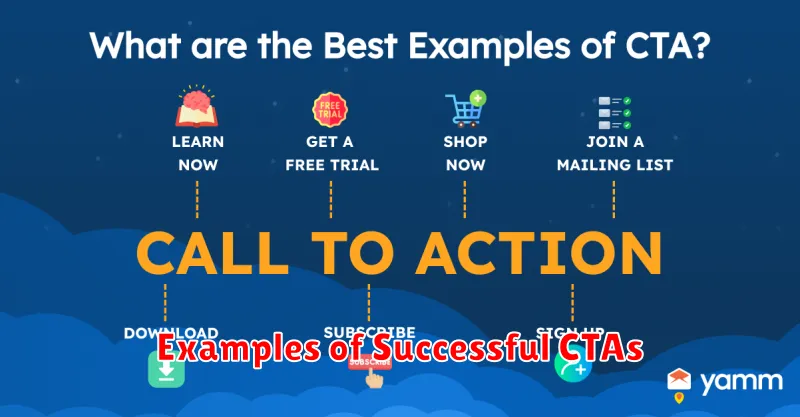In the competitive landscape of modern marketing, a compelling call to action (CTA) is paramount to success. A well-crafted CTA can significantly impact conversion rates, driving desired actions from your target audience. This comprehensive guide delves into the art of creating the perfect call to action, providing marketers with the tools and strategies they need to maximize engagement and achieve their marketing objectives. From understanding the psychology behind effective CTAs to exploring various types and best practices, this guide will empower you to transform passive viewers into active participants.
Whether you’re aiming to boost sales, generate leads, or increase website traffic, crafting the perfect call to action is essential. This guide will explore the core principles of effective CTA design, covering everything from compelling copywriting and strategic placement to A/B testing and performance analysis. By mastering the nuances of call to action creation, you can effectively guide your audience towards desired outcomes and unlock the full potential of your marketing campaigns. Learn how to optimize your calls to action for various platforms, including websites, email marketing, and social media, and ensure your message resonates with your target audience.
What is a Call to Action (CTA)?
A call to action (CTA) is a marketing term that refers to any element designed to prompt an immediate response or encourage an interaction from the audience. It’s a direct instruction that tells the audience what action to take and how to take it. CTAs are crucial for converting prospects into leads and customers. They bridge the gap between passive browsing and active engagement.
Think of a CTA as the guiding hand that directs your audience towards a desired outcome. This outcome could be anything from subscribing to a newsletter, downloading a resource, making a purchase, or requesting a demo. Effective CTAs are clear, concise, and compelling, providing a clear path for the user to follow.
CTAs can take various forms, including buttons, text links, or even plain text within an advertisement. Regardless of the format, the purpose remains the same: to motivate the audience to take the next step in the sales funnel.
Types of Calls to Action
Calls to action come in various forms, each designed to elicit a specific response from the audience. Understanding these types is crucial for tailoring your CTAs to your marketing goals.
Lead Generation CTAs focus on capturing user information. These often involve forms, newsletter sign-ups, or requests for quotes, ultimately building your prospect database.
Sales CTAs aim to drive immediate purchases. Think “Buy Now,” “Add to Cart,” or “Get Your Discount.” Their directness encourages immediate conversions.
Engagement CTAs seek to foster interaction. Examples include “Read More,” “Watch Now,” “Learn More,” or “Join the Conversation.” These CTAs prioritize content consumption and community building.
Social Sharing CTAs encourage audience promotion of your content or brand. “Share This,” “Tweet This,” or “Follow Us” are common examples. They leverage social networks for wider reach.
Writing Effective CTAs: Tips and Best Practices
Crafting compelling CTAs requires careful consideration of language, placement, and design. Clarity is paramount. Users should immediately understand what action is expected of them.
Use action-oriented verbs to create a sense of urgency and encourage immediate engagement. Words like “Download,” “Get,” “Start,” and “Join” are effective choices. Specificity is also crucial. Instead of a generic “Learn More,” try “Learn More About Our Pricing” for a more targeted approach.
Keep your CTA concise. Short, punchy phrases are more likely to capture attention and drive conversions. Personalization can also significantly improve effectiveness. Tailoring your CTA to the specific audience segment can resonate more deeply.
Finally, create a sense of urgency. Limited-time offers or exclusive deals can motivate users to act quickly. Phrases like “Limited Time Offer” or “Get it Before it’s Gone” can be powerful motivators.
Designing Visually Appealing CTAs
A visually appealing CTA grabs attention and encourages clicks. Design plays a crucial role in its effectiveness. Consider these key elements:
Color Contrast
Use colors that contrast with the surrounding background, making the CTA button or text stand out. A brightly colored button on a muted background, or vice-versa, is often effective.
Size and Shape
The CTA should be large enough to be easily seen, but not so large that it overwhelms the page. Experiment with different button shapes (rectangular, rounded, etc.) to see what performs best.
Whitespace
Give your CTA some breathing room. Sufficient whitespace around the button helps it stand out and prevents it from feeling cluttered.
Font
Choose a clear, legible font that is easy to read. The font size should be large enough to be visible, and the font style should align with your overall brand aesthetic.
Placing CTAs Strategically for Maximum Impact
Strategic CTA placement is crucial for maximizing conversions. A well-placed CTA guides the user towards the desired action at the optimal moment in their journey.
Consider the user experience. Where does a CTA make the most sense within the flow of information? Above the fold placement is often effective, ensuring immediate visibility. However, don’t discount placing CTAs mid-page or even at the end of content, particularly after building value and trust.
Context is key. Tailor CTA placement to the specific platform. On a landing page, a prominent CTA above the fold might be ideal. Within a blog post, a contextual CTA placed after presenting a solution is often more persuasive. For social media, a clear CTA within the caption or as a button can encourage engagement.
Avoid overwhelming the user with too many CTAs. Prioritize clarity and focus on the most important action you want the user to take on each page.
A/B Testing Your CTAs for Optimal Performance
A/B testing, also known as split testing, is crucial for optimizing your CTAs. It involves creating two or more versions of your CTA, each with a variation in a single element (e.g., wording, color, button size, placement). These versions are then shown to different segments of your audience simultaneously.
By analyzing the performance of each variation, you can identify which version resonates best with your target audience and drives the highest conversion rates. Track key metrics such as click-through rates (CTR) and conversion rates to determine the winning variation.
Consider testing these elements:
- CTA Wording: Experiment with different action verbs and phrasing.
- Button Color: Test contrasting colors that stand out from the background.
- Button Size and Shape: Evaluate different sizes and shapes for optimal visibility.
- CTA Placement: Try placing the CTA in different locations on the page.
Remember to test only one element at a time to isolate the impact of each change. Continuous A/B testing is essential for ongoing optimization and improvement of your CTA performance.
Examples of Successful CTAs

Examining successful CTAs across various platforms can provide valuable insights for crafting your own. Here are a few examples demonstrating effective strategies:
E-commerce:
A clothing retailer uses “Shop the New Collection Now” to drive traffic directly to their latest product offerings. This clear and concise CTA focuses on the desired action and creates a sense of urgency.
Software as a Service (SaaS):
A project management software company utilizes “Start Your Free Trial Today” to encourage sign-ups. Highlighting the “free” aspect and immediate access is a compelling incentive.
Non-profit Organizations:
A charity organization employs “Donate Now and Make a Difference” to appeal to donor generosity. This CTA emphasizes the positive impact of contributing.
Lead Generation:
A marketing agency uses “Download Our Free Marketing Guide” to capture leads. Offering valuable content in exchange for contact information is a proven lead generation tactic.
Common CTA Mistakes to Avoid
Even with the best intentions, marketers can fall prey to common CTA mistakes that hinder their effectiveness. Avoiding these pitfalls is crucial for maximizing conversions.
One frequent mistake is creating generic CTAs. Phrases like “Click Here” or “Learn More” lack the persuasive power of more specific and action-oriented language. Instead, tailor your CTA to the specific offer and desired action, such as “Download the Free Guide” or “Get Your Personalized Quote.”
Another common error is hiding the CTA. Ensure your CTA is prominently displayed and easily visible to visitors. It should stand out from the surrounding content through contrasting colors, clear typography, and sufficient white space.
Vague language is another culprit. Be clear and concise about what users can expect when they click the CTA. Avoid jargon or overly technical terms that may confuse your audience. Directness and transparency are key.
Finally, neglecting to track and analyze CTA performance is a significant oversight. Use analytics tools to monitor click-through rates and conversion rates. This data will provide valuable insights into what’s working and what needs improvement, allowing you to refine your CTAs for optimal performance.
Measuring the Success of Your CTAs

Measuring the effectiveness of your CTAs is crucial for optimizing your marketing campaigns. Click-Through Rate (CTR) is a fundamental metric, calculated by dividing the number of clicks by the number of times the CTA was viewed. A high CTR indicates a compelling CTA that resonates with your audience.
Beyond CTR, consider conversion rate, which measures how many clicks result in the desired action, such as a purchase or sign-up. This metric directly reflects the CTA’s ability to drive conversions. Tracking conversions requires setting up appropriate goals within your analytics platform.
Further analysis can involve examining bounce rate for pages containing your CTAs. A high bounce rate might suggest the CTA isn’t aligned with user expectations or the landing page content. Analyzing user behavior through heatmaps or scroll tracking can also reveal how users interact with the CTA and surrounding elements.
The Future of Calls to Action
The landscape of calls to action is constantly evolving, driven by advancements in technology and shifting consumer behavior. Personalization is becoming increasingly crucial, with CTAs tailored to individual user preferences and browsing history. This allows for more targeted and relevant messaging, boosting conversion rates.
Artificial intelligence (AI) is also playing a larger role. AI-powered tools can optimize CTA placement, wording, and even design in real-time, responding to user interactions and maximizing effectiveness. This dynamic optimization goes beyond A/B testing, allowing for continuous improvement and adaptation.
Voice search and voice assistants present a new frontier for CTAs. Marketers must adapt their strategies to cater to voice interactions, focusing on conversational language and integrating CTAs seamlessly into voice experiences.
Interactive CTAs, incorporating elements like quizzes, polls, and augmented reality experiences, are gaining traction. These engaging formats capture user attention and provide a more immersive brand experience, potentially leading to higher conversion rates.

